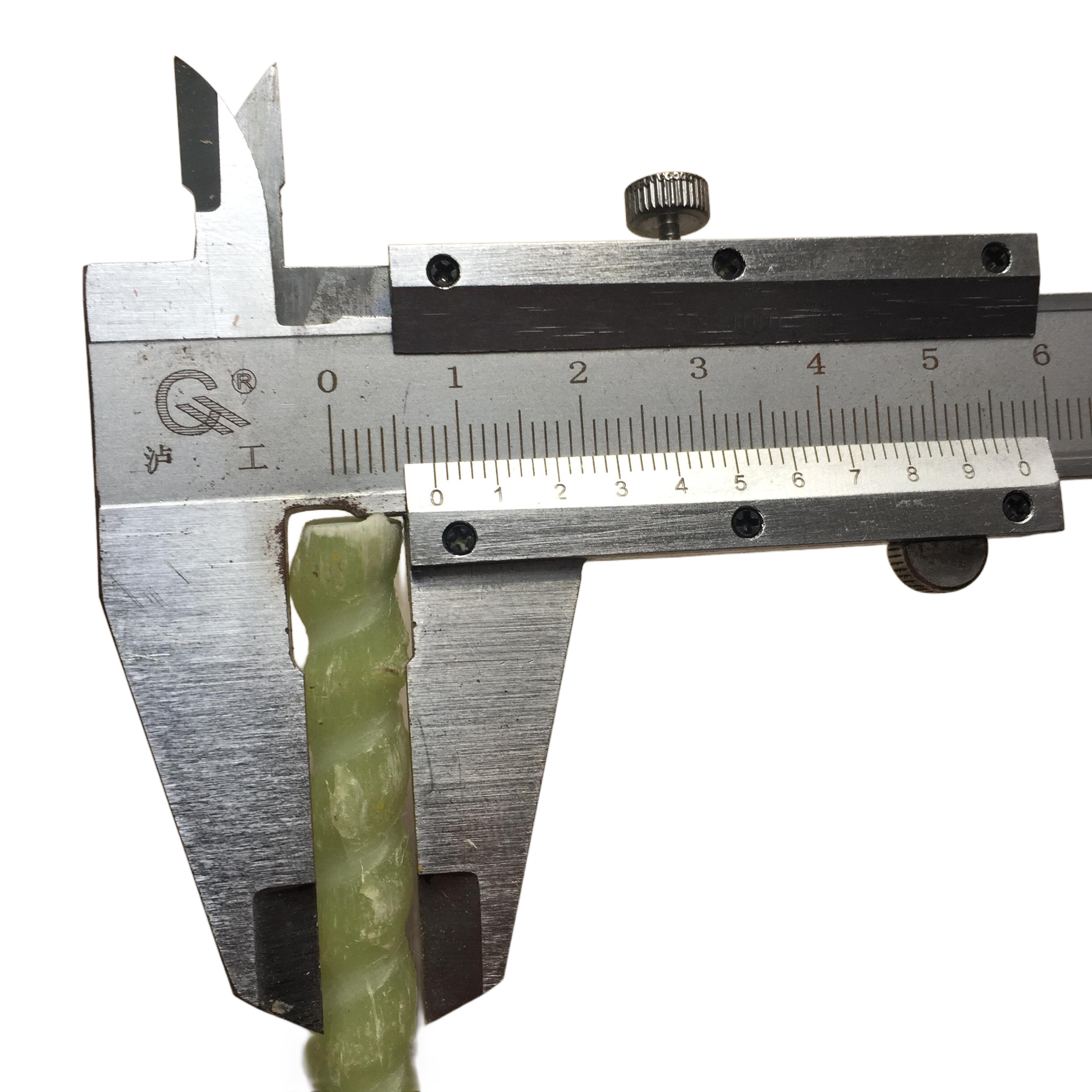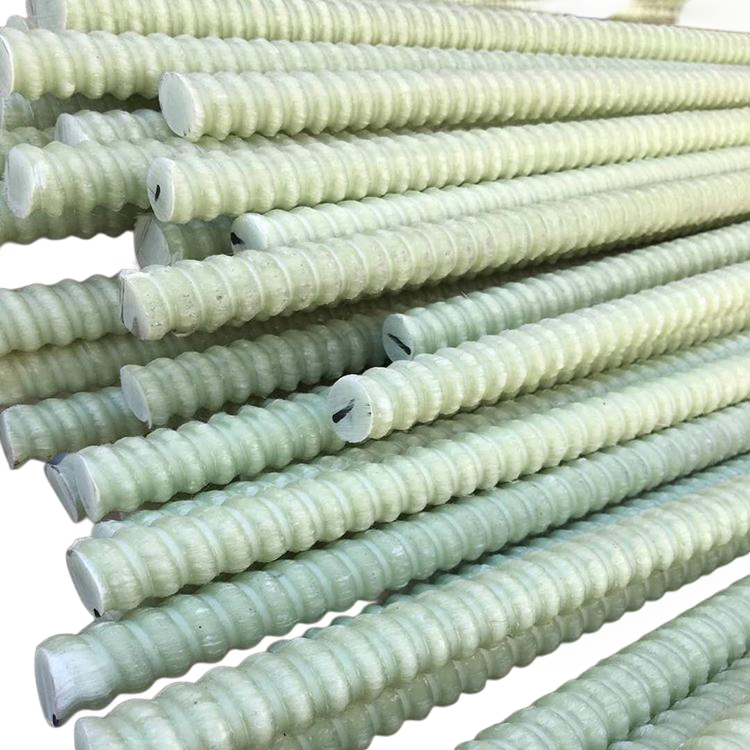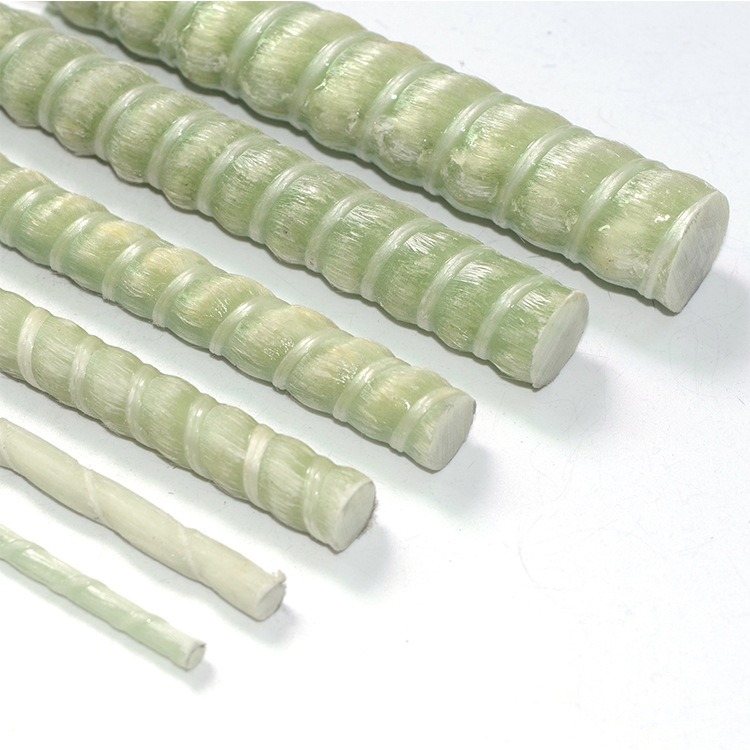Introduction
Fiberglass rebar, also known as glass fiber-reinforced polymer (GFRP) rebar, has emerged as a revolutionary material in the construction industry. Its superior properties, such as high tensile strength, corrosion resistance, and lightweight nature, make it an attractive alternative to traditional steel reinforcement. This article delves into the longevity of fiberglass rebar, exploring its durability, performance in various environments, and factors influencing its lifespan. By understanding these aspects, engineers and construction professionals can make informed decisions when considering Fiberglass Rebar for their projects.
The Composition and Manufacturing of Fiberglass Rebar
Fiberglass rebar is composed of high-strength glass fibers embedded in a polymeric resin matrix. The manufacturing process involves pultrusion, where continuous strands of glass fibers are impregnated with resin and pulled through a heated die to form the desired rebar shape. This process ensures consistent cross-sectional properties and allows for customization of rebar dimensions. The resin matrix, commonly composed of vinyl ester or epoxy, provides chemical resistance and binds the fibers together, contributing to the overall durability of the rebar.
Materials and Properties
The primary materials used in fiberglass rebar are E-glass fibers and high-performance resins. E-glass fibers offer excellent tensile strength, modulus of elasticity, and thermal properties. The resins provide environmental resistance, particularly against moisture, alkalinity, and chemical agents. The combination results in a composite material with high strength-to-weight ratio, making it suitable for various structural applications.
Factors Influencing the Lifespan of Fiberglass Rebar
The longevity of fiberglass rebar is influenced by several factors, including environmental conditions, mechanical stress, manufacturing quality, and installation practices. Understanding these factors is crucial for predicting the service life of structures reinforced with fiberglass rebar.
Environmental Conditions
Environmental exposure significantly affects the durability of fiberglass rebar. Factors such as temperature fluctuations, UV radiation, moisture, and chemical exposure can impact the material properties over time. Fiberglass rebar exhibits excellent resistance to corrosion, especially in aggressive environments where steel rebar would typically deteriorate. Its performance in alkaline environments, such as concrete, is also superior due to the protective resin matrix.
Mechanical Stress and Fatigue
Repeated mechanical loading and stress can lead to fatigue in any structural material. Fiberglass rebar has demonstrated high fatigue resistance under cyclic loading conditions. Studies have shown that GFRP rebars maintain structural integrity even after prolonged exposure to dynamic stresses, making them suitable for applications subjected to vibrations and fluctuating loads.
Comparative Longevity: Fiberglass Rebar vs. Steel Rebar
When comparing the lifespan of fiberglass rebar to traditional steel rebar, several advantages emerge. Steel rebar is prone to corrosion, especially in environments with high moisture content or exposure to de-icing salts. Corrosion leads to structural degradation, reducing the service life of the reinforced concrete. In contrast, fiberglass rebar's inherent corrosion resistance significantly extends the lifespan of structures.
Case Studies Demonstrating Longevity
Numerous projects have successfully utilized fiberglass rebar, showcasing its durability over time. For instance, coastal infrastructure projects have benefited from GFRP rebar's resistance to saltwater corrosion. Bridges and piers constructed with fiberglass rebar have demonstrated minimal maintenance requirements and prolonged service life compared to those reinforced with steel.
Laboratory Tests and Certifications
Extensive laboratory testing has been conducted to assess the long-term performance of fiberglass rebar. Accelerated aging tests simulate environmental conditions to predict material behavior over extended periods. These tests have indicated that fiberglass rebar can retain its mechanical properties for over 100 years, depending on the exposure conditions and quality of installation.
Standards and Compliance
Fiberglass rebar complies with international standards, such as the American Concrete Institute (ACI) guidelines and ASTM specifications. Compliance ensures that the material meets the required performance criteria for structural applications. Manufacturers provide certifications and testing data to validate the rebar's suitability for specific projects.
Installation Practices Impacting Lifespan
Proper installation is crucial for maximizing the lifespan of fiberglass rebar. Handling practices should minimize damage to the rebar surface, and appropriate tying methods should be employed. Compatibility with other construction materials, such as concrete mix designs, also plays a role in the longevity of the reinforced structure.
Best Practices for Contractors
Contractors should be trained in handling and installing fiberglass rebar. Using non-metallic tying materials and ensuring proper cover depth can enhance the performance of the rebar. Adhering to manufacturer guidelines and industry best practices contributes to the overall durability of the construction.
Economic Considerations
While the initial cost of fiberglass rebar may be higher than traditional steel, the long-term economic benefits are significant. Reduced maintenance costs, extended service life, and prevention of corrosion-related repairs result in overall cost savings. Life-cycle cost analyses often favor fiberglass rebar in infrastructure projects that demand longevity and reliability.
Return on Investment
Investing in fiberglass rebar can lead to a higher return on investment due to decreased downtime and repair expenses. For critical structures, such as bridges and marine constructions, the cost-effectiveness becomes more pronounced over the structure's lifespan.
Environmental Impact and Sustainability
Fiberglass rebar contributes to sustainability efforts in the construction industry. Its corrosion resistance leads to longer-lasting structures, reducing the need for resource-intensive repairs and replacements. Moreover, the production of fiberglass rebar has a lower carbon footprint compared to steel, aligning with environmental conservation goals.
Recyclability and End-of-Life Considerations
Although recycling options for fiberglass rebar are limited compared to steel, advancements are being made to repurpose composite materials. Research into recycling methods and the development of sustainable disposal practices are ongoing, enhancing the environmental advantages of using fiberglass rebar.
Innovations and Future Developments
The field of composite materials is continually evolving, with innovations aimed at improving the performance and lifespan of fiberglass rebar. Nanotechnology, hybrid composites, and improved resin formulations are areas of active research. These developments promise to enhance the mechanical properties and durability of fiberglass rebar further.
Nanotechnology Enhancements
Incorporating nanoparticles into the resin matrix can improve the thermal stability and mechanical strength of fiberglass rebar. Such enhancements can lead to even longer service life and expanded applicability in extreme environments.
Challenges and Limitations
Despite its advantages, fiberglass rebar faces certain challenges. Its relatively low modulus of elasticity compared to steel can result in higher deflection in beams if not properly accounted for in design. Additionally, the long-term performance under sustained loads and harsh conditions requires further empirical data to strengthen predictive models.
Design Considerations
Engineers must adjust design methodologies when using fiberglass rebar, considering factors such as creep, deflection, and bond characteristics with concrete. Codes and standards are evolving to provide guidance for designers to effectively utilize fiberglass rebar in structural applications.
Regulatory and Code Acceptance
The acceptance of fiberglass rebar in building codes and standards is increasing worldwide. Organizations such as the American Association of State Highway and Transportation Officials (AASHTO) and the International Federation for Structural Concrete (fib) have recognized the material in their guidelines. This recognition facilitates broader adoption in infrastructure projects.
Global Adoption and Case Studies
Countries like Canada, Japan, and European nations have integrated fiberglass rebar into various infrastructure projects. Documented case studies demonstrate successful applications and provide data supporting the material's long-term performance and durability.
Conclusion
Fiberglass rebar offers a promising alternative to traditional steel reinforcement, with the potential for a lifespan exceeding 100 years under optimal conditions. Its corrosion resistance, mechanical properties, and adaptability to various environments make it a valuable material in modern construction. By addressing design considerations and adhering to best practices in installation, the longevity of structures reinforced with fiberglass rebar can be maximized. As research and technology advance, the applications and performance of Fiberglass Rebar are expected to expand, solidifying its role in sustainable and resilient infrastructure development.




























